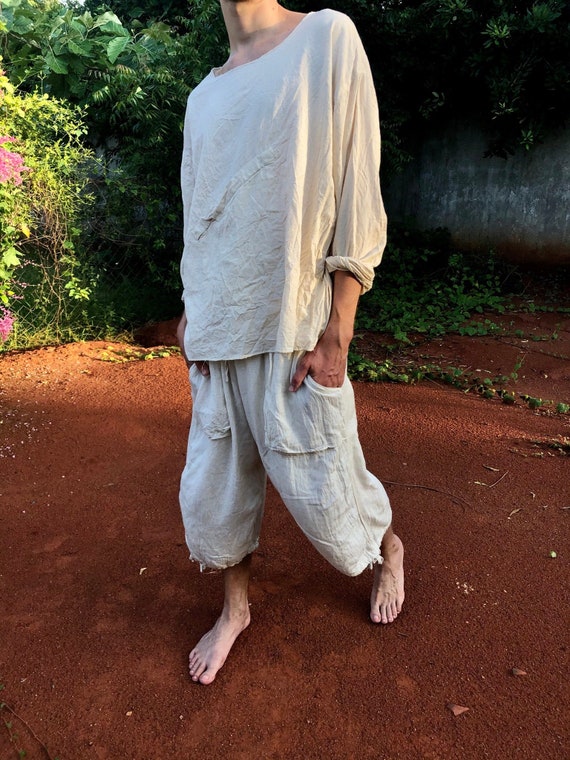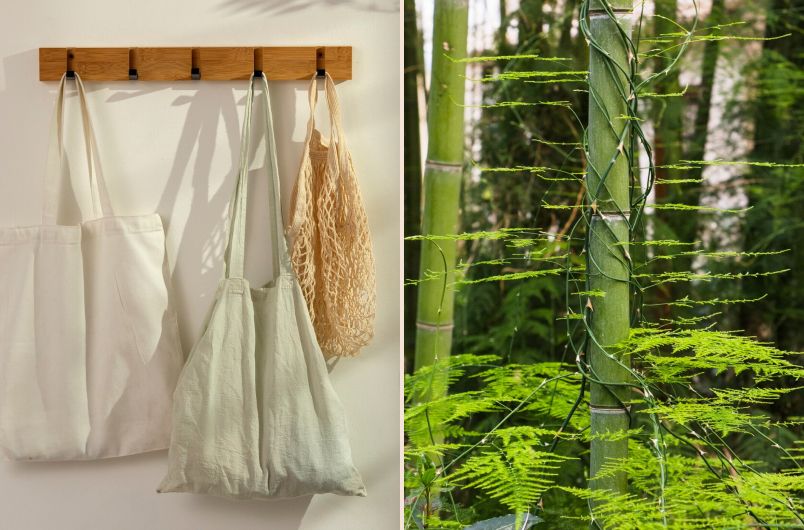Recommended News On Choosing Bamboo Clothing
Wiki Article
Why Is Hemp Stronger, More Biodegradable And More Regenerative Than Cotton?
Hemp is considered more biodegradable due its inherent properties and the way hemp grows. Here's why- Biodegradability-
Natural Fibers - The hemp's fibers are biodegradable. If they are removed, hemp clothing and textiles disintegrate naturally over time, returning to the soil and not leaving behind a the long-lasting garbage. Contrast this with synthetic fibers, like polyester which require many years to decompose.
The absence of synthetic additives Hemp textiles typically don't contain chemicals or synthetic additives that can hinder biodegradability. In contrast, some cotton textiles are treated with synthetic chemicals, such as certain finishes or dyes, which can hinder the process of biodegradation.
Durability-
Hemp is known for its strength and durability. Hemp clothing, textiles, and other items are more durable than cotton. The durability of hemp clothing implies that it is able to endure more washings and wearing cycles before it begins to deteriorate.
Hemp fabrics tend to be less prone to pill (the formation small fuzzy ball on the fabric's surface) as compared to cotton. This attribute helps to prolong their life as well as overall quality.
Regenerative Agriculture-
Soil Health Hemp cultivation can be regenerative if done sustainably. Hemp has a deep root system which helps to prevent soil erosion and compaction and can also enhance soil health by opening up the soil and encouraging microbial activity. This regenerative ingredient helps keep the soil healthier to produce future crops.
Low environmental impact - Sustainable hemp cultivation techniques typically use a minimal amount of pesticides or herbicides in order to minimize environmental damage. In contrast, traditional cotton farming could result in the degradation of soils and pollution of water due to its reliance on synthetic chemicals.
Water Efficiency-
Hemp is a plant that requires less water than cotton. Hemp's drought-resistant nature lets it grow even in conditions of low water or rain. It's a water-efficient choice particularly for areas that are resource-limited.
Hemp is a good crop to incorporate into rotational systems. This can help improve the soil's health as well as reduce the risk of developing diseases and soil loss. In cotton farming the practice of rotating crops is not as common.
Hemp is adaptable and can be utilized in many ways, including for textiles, clothing or construction materials. Hemp's versatility means that it can be used to help support many industries using sustainable practices that are regenerative and sustainable.
In addition to these advantages of hemp, it's also essential to know that hemp as well as cotton can be grown sustainably (or not) dependent on the farming techniques and the processing techniques. Selecting hemp products produced using eco-friendly and ethical methods will maximize the environmental advantages. Selecting organic cotton products can help reduce environmental issues associated with traditional cotton production. Check out the top rated look what I found about hemp clothing for site tips including hoodlamb coat, hemp fabric clothing, hemp shorts, hemp jeans, hemp denim, hemp underwear, mens hemp t shirts, patagonia iron forge jacket, hemp button shirt, hemp yoga clothes and more.

What Makes Hemp Clothing Technically And Functionally Superior To Traditional Fibres?
Hemp clothing offers a variety of practical and technical advantages over conventional fibers while also being environmentally friendly. Here are some of the ways hemp clothing sets itself apart as a sustainable high-performance, high-performance product- Moisture Wicking & Breathability
Hemp fibres are extremely air-tight. They also help to wick away water, making hemp clothing very comfortable under all kinds of circumstances. They can help wick away sweat, keeping wearers cool and dry during hot weather.
Temperature Regulation
Hemp clothing exhibits excellent thermoregulating properties. It is able to keep you warm in cool temperatures by trapping body heat and assisting to keep cool in hot conditions when moisture and heat can be released. The natural temperature regulation reduces the requirement to change your clothes.
Durability and Longevity
Hemp fibers are renowned for their strength. Hemp clothing is known to be stronger, resistant to wear, and durable than some traditional fibers. This durability means that hemp garments can last longer, which reduces the frequency of replacements, and consequently less environmental impact.
UV Protection
Hemp fibers are a great UV protector, protecting the skin against harmful UV radiation. This feature is particularly beneficial when doing outdoor sports or activities.
Biodegradability:
Hemp clothes are biodegradable which means it breaks down naturally over time when disposed of. The environmental impact of textiles is decreased due to this characteristic, in contrast synthetic fibers, which could stay in landfills over an extended period.
Low Environmental Impact
Hemp production typically uses the least amount of synthetic pesticides and herbicides as compared to cotton. It uses less of the precious water resources. This is a greener choice. Hemp farming organically enhances the environmental benefits.
Carbon Sequestration-
Hemp plants can absorb carbon dioxide from the air in the course of their growth. In turn, hemp cultivation could act as an carbon sink, which helps to lower greenhouse gas emissions.
Sustainable and crop rotation
Hemp can be included in crop rotation systems, improving the overall health of soils and decreasing the possibility of soil depletion and disease buildup. This sustainable farming practice helps to reduce its environmental impact.
Versatility:
Mixing hemp fibers and other natural materials like organic cotton or recycled polyester could create high-performance, eco-friendly fabric blends. This versatility allows for the development of innovative and sustainable textiles.
Low Toxicity-
Hemp fibers are low in toxicity and don't require extensive chemical processing during manufacturing, reducing the environmental impacts of the production of textiles.
While hemp offers many eco-friendly and practical advantages however, the durability of clothing is affected by factors such as the process of dyeing and transportation. Additionally, it is impacted by ethical work practices. Consumers who want to make eco-friendly choices should choose clothing brands which use hemp or other sustainable fibres and prioritize transparency and ethical manufacturing. Follow the best find on hemp clothing for more info including womens hemp clothing, hemp golf shirts, hemp yoga clothes, hemp underwear, hemp yoga clothes, patagonia work pants hemp, hemp pants womens, hemp fabric by the yard, patagonia hemp vest, patagonia ranch jacket and more.

What Are The Benefits Of Bamboo Clothing In Terms Of Comfort And Environment?
Bamboo clothing offers many advantages for both the comfort of the wearer and their environment.
Softness- Bamboo is known for its incredibly soft. It has a silky smooth texture that feels soft against the skin. Bamboo clothing is extremely soft and is popular for activewear, loungewear, intimate apparel, and different kinds of clothes.
Breathability Bamboo fibers breathe and help to wick away moisture. Micro-gaps facilitate air circulation, which helps keep you cool during hot temperatures. The moisture-wicking qualities help to remove sweat from the body, reducing dampness.
Bamboo clothing is excellent for thermoregulation. Bamboo clothing is able to keep you warm by capturing the body heat. In hot weather, bamboo clothing can keep your body cool and allow moisture and heat to go away. The flexibility to various temperatures can make bamboo clothing suitable for year-round wear.
Hypoallergenic - Bamboo fabric is natural hypoallergenic. It's also gentle for skin that is sensitive. It's less likely to cause skin irritations or allergic reactions.
Bamboo fibers are naturally antimicrobial agents that help prevent the spread and growth of bacteria which causes odor. This is a factor that helps bamboo clothes remaining fresh even when worn when exercising.
Environment-
Sustainability- The bamboo plant is a sustainable, renewable resource. It is among the fastest growing plants and requires very little water. No pesticides, herbicides, or other chemicals are required for its cultivation. Bamboo grows from its roots, which makes it feasible to harvest it without harming the plant.
Bamboo is water efficient by nature. It can grow with little irrigation, and is often grown with rainwater only. This helps reduce the environmental impact of water use in agriculture.
Biodegradability. Bamboo clothing is biodegradable. They naturally break down over time. This makes it less likely to produce the amount of non-biodegradable fabric waste that ends up in landfills.
Carbon Sequestration. Bamboo plants are able to sequester carbon dioxide from the atmosphere when they expand quickly. In turn, bamboo cultivation could act as a carbon sink, assisting to mitigate climate changes through reducing greenhouse gas levels.
Chemical Reduction. Bamboo fabric production typically requires the least amount of chemical processing and treatment than other textiles. Therefore, the textile industry has lower environmental impact.
Closed-Loop Production- Certain bamboo fabric manufacturing processes employ closed loop systems, which reuse and recycle water and chemicals, minimizing waste and pollution.
Important to note is that the environmental impact can vary depending upon the process of manufacturing, and whether the bamboo used for manufacturing was sourced from sustainably managed and ethically controlled bamboo forests. Bamboo clothing produced according to eco-friendly practices will provide the most environmental benefits. See the recommended bamboo clothing hints for blog examples including bamboo yoga trousers, bamboo t shirts mens, bamboo brand jeans, bamboo bed clothes, halloween bamboo pajamas, bamboo ave shorts, ladies bamboo pants, bamboo pants for women, bamboo mens shirts, onno bamboo shirts and more.
